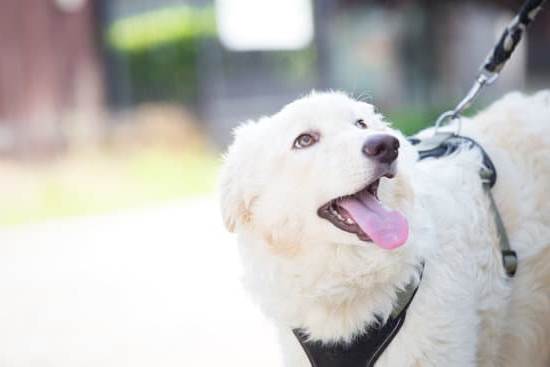Training your dog to fetch a ball is not just about playtime and having fun. It is an essential skill that can provide both mental and physical stimulation for your furry friend. In this article, we will explore the benefits of teaching your dog to fetch a ball and how it can contribute to their overall well-being.
Playing fetch is not only a great way to exercise your dog, but it also helps in keeping them mentally engaged. When dogs chase after a ball, they are using their senses, problem-solving skills, and coordination to track and retrieve the object. This type of mental stimulation can prevent boredom and destructive behaviors caused by excess energy.
Additionally, teaching your dog to fetch a ball strengthens the bond between you and your canine companion. By engaging in interactive play, you are establishing trust and creating a connection based on positive experiences. Furthermore, it provides an opportunity for effective communication with your dog, improving their response to commands and cues.
Before diving into the training process, it is important to set the stage for successful teaching sessions. Ensuring that you have the right equipment, such as an appropriate sized ball for your dog’s breed and selecting a suitable training area free from distractions will help maximize focus during training. By laying this groundwork, you can create an environment that sets both you and your dog up for success in learning how to fetch a ball effectively.
Understanding the Basics
Building a strong connection with your dog is essential before embarking on any training journey, including teaching your dog to fetch a ball. This section will focus on the importance of establishing trust and creating a bond with your furry companion, as well as developing effective communication and improving focus.
Establishing Trust and Creating a Bond
Before starting any training, it is crucial to establish a foundation of trust and build a strong bond with your dog. Dogs are more likely to respond positively to training and follow commands if they feel secure and have confidence in their human companion. Spend quality time with your dog, engaging in activities they enjoy, such as walks or play sessions.
Use this time to get to know each other better and develop an understanding of their temperament, likes, and dislikes. By demonstrating consistency, reliability, and love towards your dog, you create an environment where trust can thrive.
Developing Effective Communication
Clear communication is key when training your dog to fetch a ball. Dogs rely heavily on body language and vocal cues from their owners to understand what is expected of them. Consistency in your commands by using the same gestures or words will help establish clear communication with your canine companion. Verbal praise and positive reinforcement should be used consistently whenever your dog exhibits desired behaviors or responds correctly to commands.
Gaining Your Dog’s Attention and Improving Focus
One major hurdle many trainers face during the early stages of training is gaining their dog’s attention and improving focus. It’s important to note that dogs have different levels of attention span depending on age, breed, personality, or distractions present in their surroundings. To overcome this challenge, start the training process in a quiet area free from distractions. Use treats or toys as rewards for paying attention to you when called upon.
To further improve focus, incorporate short training sessions throughout the day instead of one long session. By keeping training sessions brief and engaging, you can maintain your dog’s attention and prevent them from becoming bored or disinterested. As you progress in the training, gradually introduce distractions into the environment to help your dog learn to stay focused regardless of external stimuli.
By focusing on building a strong connection with your dog, establishing effective communication, and improving focus, you are laying a solid foundation for successful fetch training. With trust and a strong bond established, your furry friend will be eager to learn and participate in this fun activity.
Pre-Training Preparation
Gathering the right equipment is an essential step in preparing for training your dog to fetch a ball. The right equipment will not only make the training process more efficient but also ensure the safety and comfort of your dog. Here are some factors to consider when selecting the right equipment:
Choosing the right type and size of ball for your dog:
- Different dogs have different preferences when it comes to the type and texture of balls. Some may prefer tennis balls, while others may prefer rubber or foam balls. Experiment with different types of balls to see which one your dog responds to best.
- Consider the size of the ball as well. It should be small enough for your dog to carry comfortably in its mouth but not so small that it poses a choking hazard.
Selecting a suitable training area free from distractions:
- Find a quiet and controlled space where you can conduct your training sessions without distractions. This will help your dog stay focused on the task at hand.
- If possible, use an enclosed area such as a fenced yard or an indoor space with no escape routes, especially during the early stages of training when there is a higher chance of your dog running off with the ball.
Optional equipment that can enhance the training process:
- Treats: Using treats as rewards during training can be highly effective in motivating your dog and reinforcing desired behaviors. Choose treats that are small, easy to chew, and highly enticing for your dog.
- Clicker: A clicker can be a valuable tool for marking desired behaviors during fetch training. With consistent use, your dog will learn to associate the sound of the clicker with positive reinforcement.
By gathering the right equipment before starting fetch training, you set yourself up for success by providing a positive and engaging experience for both you and your dog. Remember to always prioritize safety, comfort, and enjoyment throughout each training session.
| Equipment | Considerations |
|---|---|
| Ball | – Type: Tennis, rubber, foam, etc. Choose based on your dog’s preferences.
|
| Training Area | – Quiet and controlled space
|
| Optional Equipment | – Treats: Small, easy to chew, and enticing for your dog
|
Step-by-Step Training Techniques
Once you have established a strong connection with your dog and gained their attention, it is time to begin teaching them the specific steps of fetching a ball. This section will outline the step-by-step training techniques that will help you successfully teach your dog to chase and retrieve the ball.
- Start by getting your dog excited about the ball: Before you can teach your dog to fetch, they need to associate the ball with something positive. Start by choosing a highly motivating and rewarding treat or toy that your dog loves.
Show them the ball and allow them to sniff it, reinforcing this interaction with praise and treats. Repeat this process several times over multiple sessions until your dog starts showing excitement when they see the ball. - Introduce the “fetch” command: Once your dog is excited about the ball, introduce the specific command for fetching such as “fetch” or “get it.” Say the command just before tossing or rolling the ball a short distance away from you. Encourage your dog to chase after it by using an energetic tone of voice and positive reinforcement. When your dog reaches the ball, give them plenty of praise and reward them with treats.
- Teach your dog to bring the ball back: After your dog has successfully chased after and grabbed the ball, it is time to teach them how to bring it back to you. Stand in one place while calling their name and using an encouraging tone of voice. You can also use a treat or another toy as an additional motivator for returning to you with the ball.
- Reward proper behavior: When your dog brings the ball back to you, offer praise, pets, and treats as rewards for their successful retrieve. If they drop or release the ball upon reaching you, immediately reward this behavior with praise and treats. This will reinforce both chasing after the ball and bringing it back to you.
Remember, patience and consistency are key during this training process. Each dog learns at its own pace, so be flexible and adapt to your pet’s individual needs. With daily practice and positive reinforcement, your dog will soon become proficient in chasing and retrieving the ball.
| Training Technique | Description |
|---|---|
| Getting Your Dog Excited | Show your dog the ball, allow them to sniff it, and reinforce the interaction with praise and treats. |
| Introducing the “Fetch” Command | Say the command just before tossing or rolling the ball a short distance away from you and encourage your dog to chase after it. |
| Teaching Your Dog to Bring the Ball Back | Stand in one place while calling their name and use an encouraging tone of voice to prompt them to bring the ball back to you. |
| Rewarding Proper Behavior | Praise, petting, and treats should be given as rewards when your dog successfully retrieves and returns with the ball. |
Troubleshooting Common Challenges
Dealing with dogs who show reluctance or fear towards fetching
Some dogs may initially show reluctance or fear towards fetching, which can make the training process more challenging. In these cases, it’s important to be patient and understanding. Start by creating a positive association with the ball by rewarding your dog for showing interest in it, even if they don’t fetch it right away. Gradually increase their comfort level by tossing the ball closer each time, and always use positive reinforcement to reward any progress made.
If your dog is fearful or anxious about fetching, consider using a different type of toy that they are more comfortable with, such as a plush toy or a rope toy. This can help build their confidence before introducing them to a ball. Additionally, desensitization techniques can be employed to help your dog overcome any fears associated with fetching. This involves slowly exposing them to the sight and sound of a ball and gradually increasing their exposure over time.
Addressing difficulties in releasing the ball or dropping it at your feet
Some dogs may struggle with releasing the ball or dropping it at your feet after retrieving it. To address this challenge, you can use a trade-off method where you offer another desirable object, like a treat or another toy, in exchange for the ball. This encourages your dog to drop the ball willingly in order to receive something they want.
Another technique is to teach your dog the “drop it” command separately from fetching training. Start by trading a high-value treat for whatever object your dog has in their mouth and saying “drop it” as they do so. Gradually increase the difficulty by using less tempting treats until they understand that “drop it” means to release whatever is in their mouth.
Managing distractions and maintaining focus during training sessions
During fetch training sessions, distractions can pose challenges for both you and your dog. To help your dog maintain focus, start training in a quiet, familiar location without many distractions. As your dog becomes more comfortable with the training process, gradually introduce distractions one at a time.
To keep your dog engaged and focused during training sessions, use high-value treats or toys as rewards. This will motivate your dog to pay attention and follow your commands. Additionally, utilizing positive reinforcement techniques such as praise and gentle petting can help maintain a positive and engaging atmosphere during training.
If your dog becomes distracted during a session, redirect their attention back to you by using an attention cue or command. Practice this consistently throughout each session to reinforce the importance of maintaining focus.
Remember that every dog is different and may require individualized approaches to overcome specific challenges during fetch training. By being patient, understanding their needs, and using positive reinforcement techniques consistently, you can help your dog become successful in fetching the ball.
Advancing the Game
Now that your dog has mastered the basic fetch game, it’s time to take things up a notch and add some challenges to further develop their retrieval skills. This section will guide you through the process of advancing the game and building upon the foundation you’ve already established with your furry friend.
One way to challenge your dog is by increasing the distance between you and the ball. Start by gradually throwing the ball a bit farther each time your dog successfully retrieves it. This helps them build confidence and gradually expands their ability to retrieve objects from longer distances.
Additionally, consider incorporating obstacles into the game. Place small hurdles or cones around the training area and encourage your dog to navigate them while retrieving the ball. This helps improve their coordination and agility.
To further enhance your dog’s retrieval skills, introduce different environments and terrains. Take them to new locations, such as a park or beach, where they can practice fetching on various surfaces like grass or sand. By exposing them to different textures and surroundings, you are helping them become adaptable in retrieving objects in different scenarios.
As you continue advancing the game, adding additional commands such as “stay” and “drop it” can provide more control during playtime. Teach your dog to stay in one place until you give them the cue to fetch the ball, and then instruct them to drop it at your feet once they’ve retrieved it. These commands not only strengthen their training but also ensure safety during outdoor activities.
Remember to always be patient with your dog as they adjust to these new challenges. Break down each step into manageable increments for easier comprehension and gradual improvement. Celebrate every successful attempt and offer positive reinforcement such as treats or praise.
By advancing the fetch game and building retrieval skills, you’re providing ongoing mental stimulation for your dog while deepening your bond through shared experiences. Keep exploring new ways to make fetch exciting and fun for both of you.
Games and Variations
Once your dog has mastered the basic skills of fetching, it’s time to add some excitement and variety to the game. By introducing new games and variations, you can keep your dog engaged, motivated, and having fun during fetch sessions.
One popular variation is the classic game of hide-and-seek with the ball. Start by showing your dog the ball and letting them become familiar with it. Then, while they watch, go hide the ball somewhere in your training area or even in different rooms of your house.
Once you’re ready, give your dog a cue such as “find it” or “seek” and encourage them to use their nose to locate the hidden ball. When they find it, make sure to reward them with praise or treats. This game not only exercises their retrieval skills but also engages their sense of smell and mental stimulation.
Another way to make fetching more exciting is by incorporating toys or treats into the game. Before throwing the ball, show your dog a favorite toy or treat and let them get excited about it. Then throw the ball along with the toy or treat in different directions.
This creates a challenge for your dog as they have to retrieve both items within a certain time frame. Not only does this add an extra level of difficulty but also adds an extra reward for their efforts.
Interactive play with other dogs can also enhance your dog’s social skills and make fetch even more enjoyable for them. Consider organizing playdates with other dogs who enjoy fetch or joining a local dog park where they can interact with other playful pups. Playing fetch together not only provides good exercise but also enhances socialization opportunities for both you and your furry friend.
By incorporating these games and variations into your fetch training routine, you will keep your dog entertained, challenged, and eager to participate in future training sessions.
Maintaining the Training
Once you have successfully trained your dog to fetch a ball, it is important to continue reinforcing this behavior to ensure their skills do not diminish over time. Consistency and regular practice are key factors in maintaining the training and keeping your dog engaged in the fetching game. In this section, we will discuss some strategies for reinforcing the fetching behavior and keeping your dog motivated.
One effective way to reinforce the fetching behavior is through gradually reducing the need for treats as rewards. While treats can be highly motivating during the initial training phase, relying on them too heavily can create dependency. Start by using treats consistently whenever your dog retrieves the ball and brings it back to you.
As they become more proficient at the task, gradually decrease the frequency of treat rewards. Instead, offer verbal praise and physical affection as reinforcement. This will help your dog understand that even without a treat, their successful retrieval is still valued and appreciated.
Another important aspect of maintaining the training is utilizing positive reinforcement and occasional refresher sessions. Positive reinforcement involves rewarding your dog for their correct behaviors immediately after they occur. This can be done by offering praise, petting, or playtime as a reward when they successfully retrieve the ball. By consistently reinforcing their desired actions, you are imparting upon your dog that fetching is a positive and rewarding behavior.
Regular refresher sessions are also beneficial in maintaining your dog’s fetching skills. Even if they have mastered this command, occasional practice sessions will help keep their interest level high and prevent regression.
Set aside dedicated time each week for short training sessions where you focus solely on playing fetch with your dog. This consistency will reinforce their understanding of what is expected during these sessions and ensure that they do not lose interest or forget how to properly retrieve a ball.
Conclusion
Training your dog to fetch a ball is not just a fun game, but it also has numerous benefits for both you and your furry friend. Throughout the training process, you have laid the foundation for a strong bond and effective communication with your dog, which is key to successful training. By establishing trust and gaining their attention, you have set the stage for teaching your dog to chase, retrieve, and ultimately enjoy the game of fetch.
As you progress in the training, you may encounter some challenges and obstacles along the way. However, by troubleshooting common issues such as fear or reluctance towards fetching or difficulties in releasing the ball, you can overcome these hurdles through patience and positive reinforcement. Remember that consistency is key in maintaining the fetching behavior and reinforcing what your dog has learned. Gradually reducing the need for treats as rewards will help solidify their understanding of the game.
It is important to celebrate your dog’s progress along this journey. Reflecting on their accomplishments will not only bring joy to both of you but also emphasize the positive impact that fetch training has on their overall behavior and well-being. By continuing to train and expand your dog’s skills in other areas, you can continue to strengthen your bond while providing mental stimulation and physical exercise.
In conclusion, teaching your dog how to fetch a ball is an investment that pays off in many ways. Not only does it provide mental stimulation for your furry friend, but it also strengthens the bond between you two. Through consistent practice and positive reinforcement, you are sure to celebrate success together while enjoying all the benefits that come with having a ball-fetching dog. So grab those tennis balls and get ready for endless hours of fun.
Frequently Asked Questions
How do you teach a dog to fetch with a ball?
Teaching a dog to fetch with a ball typically involves breaking down the process into smaller steps and using positive reinforcement. Begin by getting your dog excited about the ball, holding it in front of them and encouraging them to show interest. Once they engage with the ball, toss it a short distance and encourage your dog to retrieve it.
If they pick up the ball, reward them with praise, treats, or even a game of tug-of-war as a reward. Gradually increase the distance you throw the ball and continue praising and rewarding your dog when they successfully retrieve it. Consistency is key, so keep practicing this process regularly until your dog understands that fetching the ball is a fun game.
How do you teach a dog to use a fetch toy?
To teach a dog to use a fetch toy other than a ball, such as a Frisbee or plush toy, similar principles can be applied. Start by introducing the new toy to your dog in an interactive manner, allowing them to sniff and paw at it so they become familiar with its texture and scent. Then, entice your dog to play with the toy by engaging them in playtime together using excitement, praise, or treats as rewards for interacting with the toy appropriately.
Gradually introduce throwing or tossing the toy for your dog to chase and retrieve just like you would with a traditional ball fetch game. With patience and repetition, your pup should begin associating the new fetch toy with fun and eagerly participate in fetching it.
What if my dog won’t give the ball fetch?
If your dog is reluctant to give back or release the ball during fetch, there are several techniques you can try to encourage them to do so willingly. One approach is teaching “drop it” or “give” command separately from fetch itself through positive reinforcement training methods. Use treats or another high-value reward when asking your dog to drop whatever object they have in their mouth while giving an associated command word consistently. Practice this command outside of fetch sessions until your pup reliably responds to it.
Gradually incorporate the command during fetch, rewarding your dog when they let go of the ball willingly. Additionally, using two identical balls can help: throw one ball while your dog is still holding onto the first one. When they drop the first ball to chase after the second one, pick up and throw the dropped ball again as a reward for releasing it initially. By reinforcing the behavior and providing alternate rewards, you can encourage your dog to give back the ball during fetch willingly.

Welcome to the blog! I am a professional dog trainer and have been working with dogs for many years. In this blog, I will be discussing various topics related to dog training, including tips, tricks, and advice. I hope you find this information helpful and informative. Thanks for reading!





